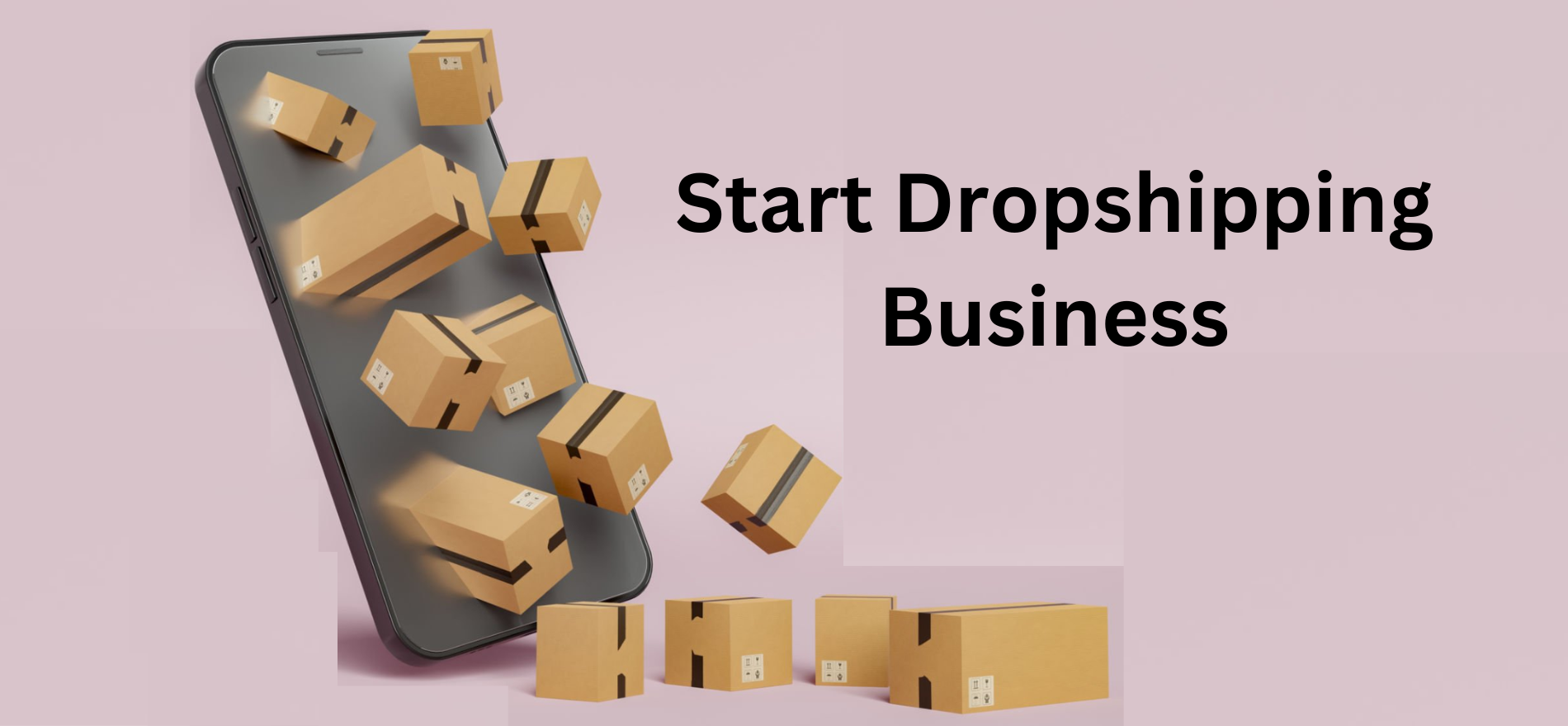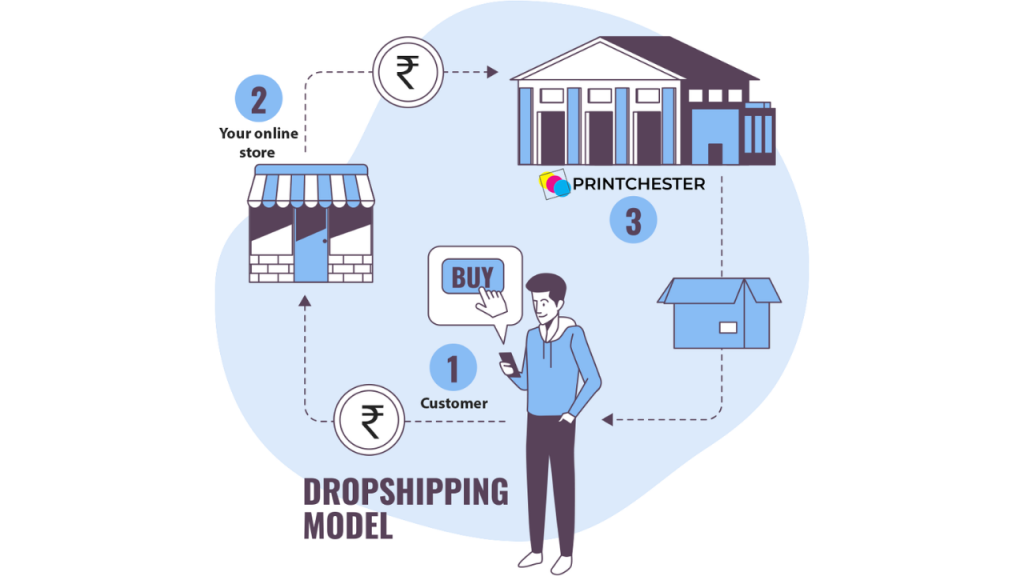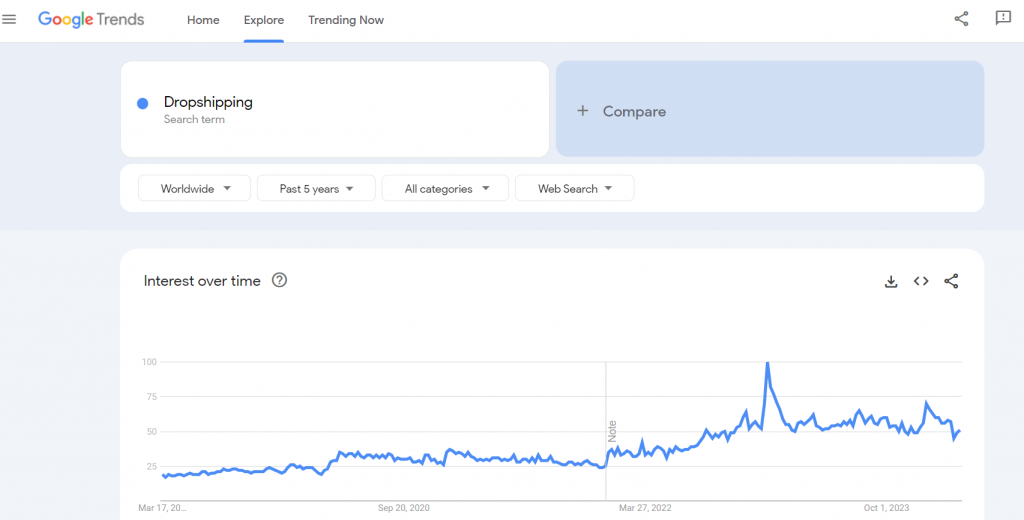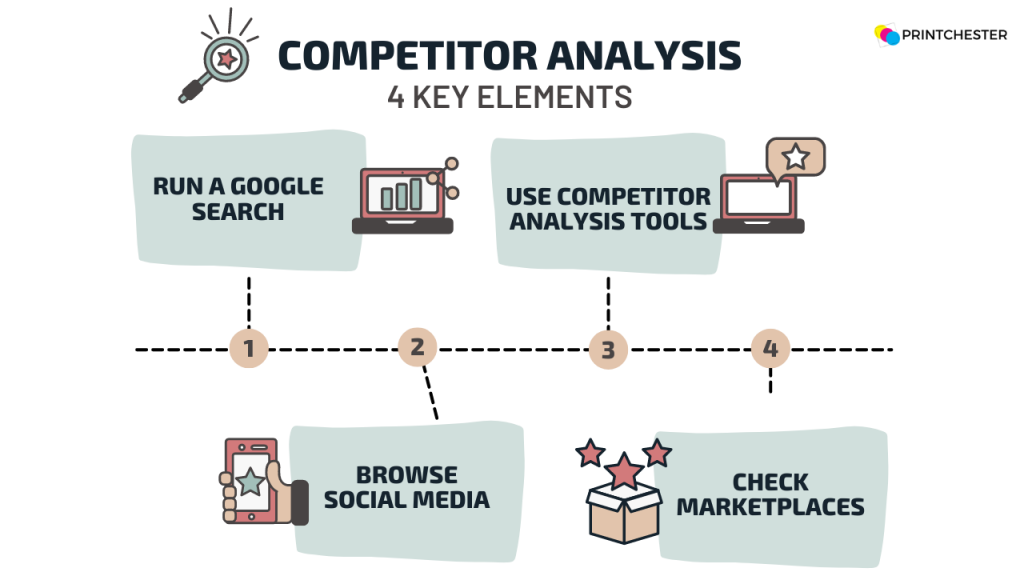How to Start A Dropshipping Business in 2024: 9-Step Guide

Dropshipping business offers a low-risk method to sell products online. Here are nine crucial steps to help you launch your dropshipping website.
Starting a dropshipping venture is a straightforward way to become an entrepreneur. When a customer places an order on your dropshipping site, the supplier handles shipping directly, eliminating the need for inventory and keeping overhead expenses low.
Here’s a step-by-step guide to starting your dropshipping business:
- Determine if dropshipping suits your business goals
- Pick a specific niche for your dropshipping store
- Investigate your competitors
- Find a reliable supplier
- Select products and set competitive prices
- Create your ecommerce website
- Decide on the legal structure of your business
- Organize your finances
- Promote your dropshipping business
1. Determine if dropshipping suits your business goals

Dropshipping is one of several ways to run an online store. Before committing, assess if it aligns with your business goals.
Typically, dropshipping suits individuals with strong marketing skills who prefer a business model with minimal upfront investment. Without needing inventory or handling products, you can start with a tablet or laptop and an internet connection.
However, there are drawbacks. Dropshippers often have limited control over their product range, and because many retailers may sell the same items, competition can be fierce.
If you want to focus on marketing rather than developing a unique product, dropshipping could be a suitable option.
2. Pick a specific niche for your dropshipping store

A niche is a specific segment of the larger market. Targeting a niche lets you define a clear audience for your store, brand, and product selection.
Choosing a niche helps you identify a target market. With a specific audience in mind, finding suitable products to dropship becomes easier.
There are two main approaches to selecting a business niche:
- Choose a niche based on your knowledge or passion.
- Choose a niche based on market demand.
The second approach involves finding niches with high customer interest but low competition. Dropshippers use keyword and product research to gauge market demand.
Finding a Niche with Keyword Research

Keyword research reveals what people are searching for online. Tools like Google Trends, Facebook Audience Insights, and Keywords Everywhere can help identify popular product-related searches.
When evaluating search demand, consider historical interest and search volume to find a niche with sustained or growing popularity.
For instance, John Murphy, founder of eBike Generation, built a $3 million dropshipping business using keyword research to identify an underserved niche: e-bikes for hunters.
Finding a Niche with Product Research
Product research identifies trending products and consumer preferences. Dropshipping apps like DSers can show product order volumes on marketplaces like AliExpress, helping you gauge the potential size of your business.
Combining keyword and product research provides a comprehensive view of a dropshipping niche. Since consumer habits change quickly, it’s important to regularly check keyword trends and product popularity.
To ensure product availability, consider selecting your dropshipping supplier before finalizing your niche.
3. Investigate your competitors
Conducting competitor analysis is crucial when starting a dropshipping business. Gather information on rival stores in your niche to identify potential products and marketing strategies.
Conducting Competitor Research

- Run a Google Search: Search for keywords relevant to your niche to see which businesses appear. These are likely your main competitors for organic search audiences. SEO tools can provide more detailed insights.
- Use Competitor Analysis Tools: These tools can reveal data on competitors’ traffic sources, visitor counts, and social media engagement, helping you refine your strategies.
- Browse Social Media: Follow competitors’ social media pages to see which posts generate the most engagement. Look for gaps in content that you could fill.
- Check Marketplaces: Review listings on platforms like eBay, Amazon, and Etsy to see how saturated your market is. Determine how to differentiate your product listings by pricing competitively or offering a superior customer experience.
Track all your competitor research in a spreadsheet to keep your findings organized and easily accessible.
4. Select a Supplier

A dropshipping supplier handles sourcing and managing inventory, processing orders and payments, and shipping products directly to your customers.
Given these critical roles, your choice of supplier significantly impacts the overall success of your dropshipping business.
Depending on your niche and product range, you might work with one supplier or multiple suppliers through a supplier directory.
Popular supplier directory apps and websites can connect your store with a vast network of dropshipping suppliers.
For instance, the Printchester app allows Shopify users to dropship products globally.
5. Choose Products and Set Prices

The products you offer are determined by your supplier’s inventory. Since many dropshipping stores may sell similar items, it’s crucial to curate a selection that appeals to your target audience.
A well-curated product catalog can create opportunities for cross-selling and upselling, encouraging your customers to purchase additional or higher-priced items.
When selecting products, review feedback from other sellers and assess the supplier’s performance history. Order product samples to ensure quality and consistency.
If working with overseas suppliers, consider choosing products eligible for expedited shipping services like ePacket from China to reduce delivery times.
Pricing Your Dropshipping Products
Develop a pricing strategy that ensures profitability. Calculate all costs, including supplier prices and operating expenses, and set a profit margin for each product. Compare your product prices with similar products in the market to maintain competitiveness.
6. Create Your Ecommerce Store
Your online store serves as the central hub for your dropshipping business, showcasing your products and facilitating customer checkouts. It’s also where traffic from your social media ads will land.
Enhance the customer experience by featuring content such as product reviews, user guides, buying guides, and blog posts. This helps customers make informed decisions but also boosts your store’s search engine visibility.
Shopify’s store builder offers a high-converting checkout process and flexible design options. Customize your store’s look with professionally designed themes that match your brand.

Adding a dropshipping app to your Shopify store streamlines product management and order processing.
Enhance Product Pages with AI
Shopify stores come equipped with AI tools to help you manage products and boost sales. Use AI to create compelling product listings that go beyond the basic information provided by your supplier.
Share a few keywords with Shopify Magic to generate product descriptions that stand out and are optimized for SEO, targeting your audience effectively.
Transform supplier-provided product photos into unique, branded images with AI-enhanced editing, setting your product pages apart from competitors.
Utilize Shopify Magic’s AI capabilities to enhance various aspects of your dropshipping store whenever the stars icon appears in the Shopify Admin.
7. Decide on a Business Structure
Creating a solid foundation for your dropshipping business involves writing a business plan and establishing a legal entity. Here are three common business structures for dropshipping businesses:
Sole Proprietorship A sole proprietorship business is owned and operated by one person, requiring minimal paperwork and no additional tax filings. This simplicity and affordability make it a popular choice for dropshippers. However, it does not offer personal asset protection if the business faces legal issues.
Limited Liability Company (LLC) Forming an LLC separates your personal finances from your business, providing a safer and more transparent accounting structure. LLCs offer flexible tax benefits that save you money compared to a sole proprietorship, though they come with additional filing requirements and incorporation fees.
C Corporation C corporations offer extensive liability protection, making them suitable for larger businesses. However, they are more expensive to incorporate and are subject to taxation, as income is taxed at both the corporate and shareholder levels.
Consulting a lawyer can help you choose the best business structure for your situation.
Apply for an EIN An Employer Identification Number (EIN) is essential for most US businesses. It functions like a Social Security number for your business and is necessary for filing taxes, applying for wholesale accounts, opening a bank account, and other business activities. You can apply for a EIN online for FREE through the IRS.
8. Set Up Finances
Separating personal and business enterprise finances simplifies accounting and provides a clear view of your business’s financial health. Consider the following steps:
Open a Business Checking Account
Deposit your revenue into a dedicated business account to keep track of income and expenses clearly and ensure financial transparency.
Apply for a Business Credit Card
A business credit card can be used for product orders, software subscriptions, ad fees, and other expenses, helping to separate personal and business expenditures. Choosing a card with benefits can also earn you rewards.
Check Local Business License Requirements
Even if you operate from home, your city may require a business license. Check with your local government to ensure compliance with all local laws.
Collect Sales Tax
If your state requires it, collect sales tax from eligible customers. Generally, you do not need to collect sales tax for orders outside your state, but stay updated on the latest regulations.
Manage Sales Tax from Shopify
Shopify Tax provides insights and tools to manage sales tax directly from your Shopify admin.
9. Market Your Dropshipping Business

Once your store is live, focus on marketing to drive traffic and boost sales. Develop strategies for the following channels:
Paid Ads
Experiment with ads on Facebook, Instagram, TikTok, YouTube, and Google to increase brand visibility and target specific audiences.
Influencer Marketing
Collaborate with influencers on platforms like Facebook, TikTok and Instagram to extend your reach and credibility, potentially boosting sales. Use Shopify Collabs to connect with influencers in your niche and pay them through performance-based affiliate marketing.
Content Marketing
Enhance brand visibility by starting a blog, creating instructional videos, or launching a podcast related to your niche. Engaging content keeps customers interested and coming back.
Communities
Engage with niche communities on platforms like Reddit and Facebook Groups to build trust and relationships, focusing on genuine interaction rather than sales pitches.
Mobile Marketing
Use SMS marketing to engage subscribers with high engagement rates. Create VIP group chats, offer live chat support, or send messages with limited-time promo codes.
Email Marketing
Maintain customer relationships with personalized email campaigns featuring promotions and helpful information to encourage repeat business.
Avoiding Common Dropshipping Mistakes
Ignoring Sales Data
Regularly monitor sales data to optimize for profit. Track product performance, ad effectiveness, profit margins, sales trends, and customer demographics.
Skipping SEO
Improve your website’s SEO to boost online visibility and drive traffic. Focus on creating original content, enhancing site speed, and ensuring mobile usability. Use tools like Google Search Console to identify areas for improvement.
Not Planning for Growth
Prepare your business for growth by building scalable systems. Avoid relying on a single supplier, automate order processing with dropshipping apps, and be ready to handle increased order volumes.
Neglecting Unhappy Customers
Prioritize customer support by providing accurate product descriptions, clear business contact information, and prompt responses to inquiries and complaints. Manage returns and refunds efficiently to maintain a positive reputation.
Leverage the latest customer service AI tools and chatbots to provide immediate assistance to customers.
Launch Your Dropshipping Business in 2024

Starting a dropshipping business is now more accessible than ever. Whether you’re a side hustler, an aspiring entrepreneur, or seeking to expand your existing store, Shopify offers an efficient and cost-effective solution.
Begin your free trial today and seamlessly integrate with a popular dropshipping app or offer products from well-known brands through Shopify Collective.
Dropshipping Business FAQ
- Identify a Niche: Select a specific market segment to target.
- Research Competitors: Analyze successful businesses in your chosen niche to understand what works.
- Choose a Dropshipping Supplier: Partner with a reliable dropshipping partner/supplier that offers the products you want to sell.
- Create an Online Store: Design and build an ecommerce website to showcase and sell your products.
Market Your Business: Use social media ads, SEO, and engaging content to attract and retain your customers.
To find the best products for your dropshipping business, focus on a niche with high demand but low competition. Use tools like Google Trends to research market trends and customer interests, and analyze market data to identify profitable products.
Dropshipping can be a profitable venture because you don’t have to handle shipping or manufacturing. Many dropshippers earn substantial incomes, with some making over $100,000 per year. However, the low barrier to entry means high competition, which can limit profit margins.
-
1.Determine if dropshipping suits your business goals
-
2. Pick a specific niche for your dropshipping store
-
3. Investigate your competitors
-
4. Select a Supplier
-
5. Choose Products and Set Prices
-
6. Create Your Ecommerce Store
-
7. Decide on a Business Structure
-
8. Set Up Finances
-
9. Market Your Dropshipping Business
-
10. Avoiding Common Dropshipping Mistakes
-
11. Launch Your Dropshipping Business in 2024
